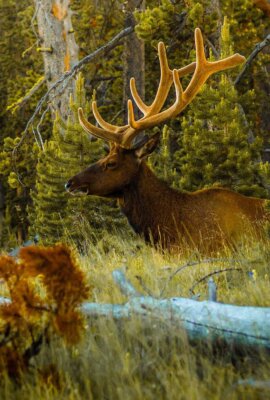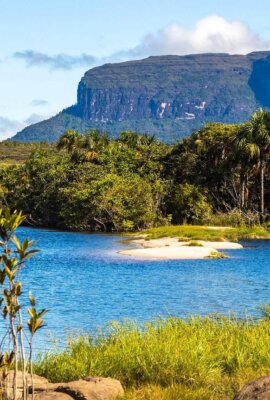Your full Wanderlust guide to
Panama

The southernmost of all the Central American countries, this sliver of land linking Costa Rica and Colombia never made it onto the ‘gringo trail’. Thankfully. Look beyond the eponymous canal; Panama has far more to offer the traveller. Its diverse cultural make-up reflects a medley of ethnicities from the descendants of Spanish conquistadors to Native Indians, and the little-visited, steamy rainforests and virginal coastlines play host to an array of exotic wildlife.
You can venture into jungle communities, where puberty rites and other tribal customs still hold sway, or soak up the rays on an uninhabited island. Moreover, despite recent development, the country retains serious ecotourism credentials: there are vast swathes of untouched tropical wilderness bustling with monkeys, jaguars, bears and more species of bird than anywhere else on the planet.
You can’t miss

“Book ahead for onward trips to Colombia. Places on backpacker yachts through the San Blas Islands fill up quickly. Organise your journey ahead of time and be sure to check-out the testimonials available online when choosing which boat to travel on. Some of the captains can be a little shady.”
The thing he wished he’d known before he arrived
Latest Panama articles
Take a torch for the unlit rural areas and frequent power cuts.
Wanderlust recommends
Enjoy a taste of tribal life – hop in a dugout canoe to reach an Emberá Indian village in style or head to Kuna Yala, an autonomous region inhabited by a traditional and fiercely independent community
Go hiking in wild Darién Province (check www.fco.gov.uk before you go)
Drink in the views from a tropical island. If the Archipiélago de las Perlas doesn’t offer enough paradise isles, then the uninhabited Isla Coiba provides gleaming white sand and azure water aplenty
Visit the Parque Nacional Volcán Barú for beautiful scenery, colonial towns and the country’s only volcano
Swim in two seas in a day. Panama is just 50 km wide at its most narrow point meaning you can spend the morning lounging by the Pacific and the evening watching the sunset over the Caribbean Sea
When to go to Panama
The dry season runs from December to April on the Pacific side, though the Caribbean side gets rain all year round. The heaviest rainfall, usually in October and November, can cause flooding, landslides and travel disruptions. Dry season generally has the best hiking and diving conditions although it is also peak tourist season, so things get booked up pretty quickly. It’s worth planning your trip to coincide with one of the festivals such as the Panama City carnival and Peninsula de Auero’s carnival (Mardi Gras), held in February and the run up to Ash Wednesday respectively.
International airports
Tocumen Airport (PTY) is 24 km from Panama City.
Getting around in Panama
Car hire is available and there is a good road network everywhere except Darién Province. Bear in mind that car insurance isn’t compulsory and many locals don’t have any. Trips on buses and in taxis can be a little hair-raising and accidents are common. It’s possible to chug between Panama City and Colon on the world’s first transcontinental railway.
Panama accommodation
Most of the tourist accommodation is to be found around Panama City and along the coast, though in sections of the country you’ll be hard pressed to find anywhere at all to lay your head. Standards and prices are a hit and miss affair – expect varying quality and a pricing system that fluctuates depending on factors such as who serves you and how rich you seem to be. Book well in advance if you want somewhere to stay during a festival or public holiday. Options include sumptuous and budget hotels, eco resorts, national park campsites, traditional village homestays, coastal houseboats and roadside motels (although these are usually ‘push buttons’– sex hotels where you pay by the hour).
Panama food & drink
Panama has a unique blend of African, Spanish and Native American cuisines. Meat, fish, rice and plantains dominate. Flavours are mild, though you will have the option to slather food in salsa piquante (spicy sauce). Along the coast seafood such as lobster, corvina, snapper, and octopus abounds. The country produces an array of fruit. Popular foods include sancocho (chicken and vegetable soup) and empanadas made from flour or corn and filled with anything from minced meat, fish and spices to cheese or dessert fillings. Vegetarians may need to develop a penchant for Chinese fare. Tap water is, by and large, safe to drink (but be wary in Bocas del Toro Province). Tropical fruit juices and local coffee are good. Locals swig seco (the national drink), rum, palm wine and an array of nationally produced beers.
Health & safety in Panama
Earthquakes pose a risk. Swimming off the Pacific and Caribbean beaches can be dangerous and drownings are frequent. Don’t even dip a toe in the Bay of Panama – it is jam packed with sewage and industrial waste. Street crime does occur so take precautions. Darién Province can be perilous – enter by air and only if you’re on an organised expedition accompanied by Panamanian police. Consult your GP or travel health clinic before departure for advice on jabs and malaria prophylaxis. Healthcare is good in the capital but facilities further afield are limited. There is a risk of contracting malaria, dengue fever, yellow fever, leishmaniasis and leptospirosis. Hantavirus pulmonary syndrome and Chagas’ disease are also a threat; try and avoid rodent habitats and mud and thatch huts.
















